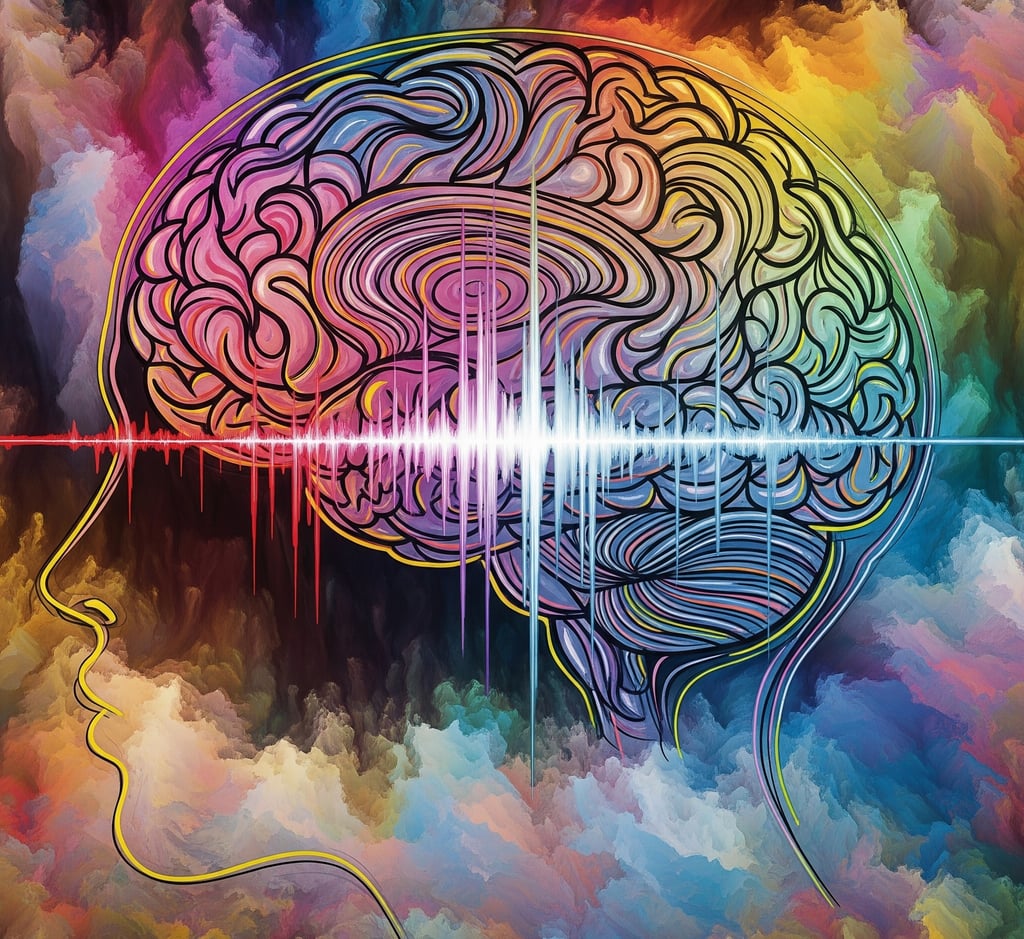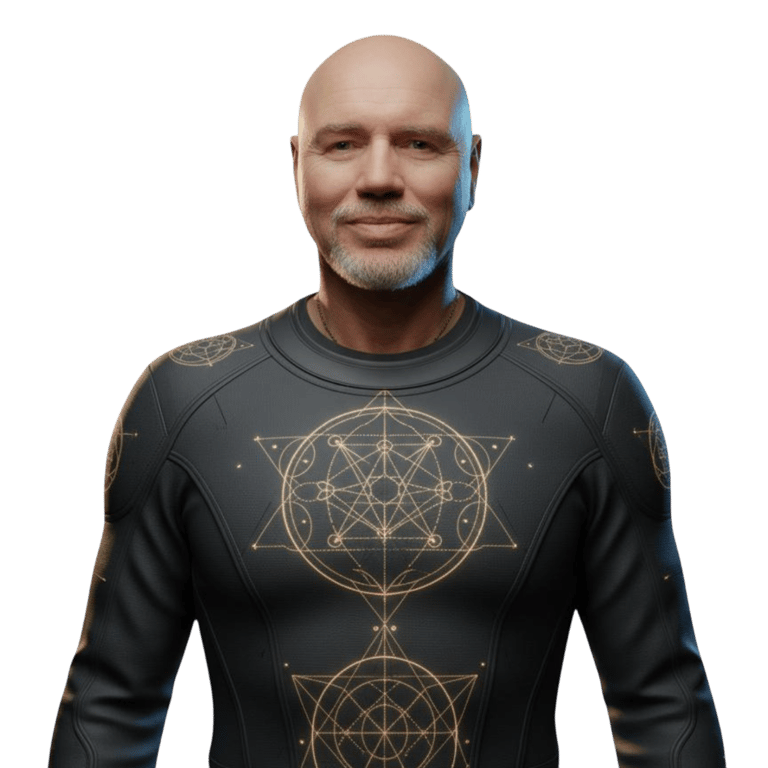The Unseen Dance: How Music Harmonises with Your Brain
Ever been swept away by a song, feeling it in your bones, sparking memories, or lifting your spirits? It's a universal human experience that transcends culture, language, and even how the music is made. This profound connection isn't just a matter of taste or memory; it's a deep biological phenomenon where sound waves literally sync with your brain. Recent breakthroughs in neuroscience, particularly a groundbreaking concept called Neural Resonance Theory, are revealing the astonishing ways music impacts our minds, explaining why a melody can move us so deeply, whether it's from a live performance, a classic recording, or a cutting-edge AI creation.
MINDFULNESS - SOUND
Nigel John Farmer
6/11/20254 min read


Ever feel a shiver down your spine when a certain chord strikes? Or an irresistible urge to move when the beat drops? It's more than just a matter of taste or nostalgia. The connection between music and our brains goes far deeper, tapping into the very core of our biology. Recent discoveries in neuroscience are revealing just how profoundly music resonates within us, transforming how we understand its power and impact.
Neural Resonance Theory: It's Not Just Hearing, It's Becoming
For years, scientists have explored the mechanisms behind our musical experiences. Traditional theories often emphasised learned expectations and predictions – our brains anticipating the next note or chord based on past exposure. However, a groundbreaking theory, Neural Resonance Theory (NRT), is shifting this perspective. NRT proposes that our brains don't simply interpret music; they become it.
Published in Nature Reviews Neuroscience in early 2025, NRT suggests that music perception arises from the brain's natural oscillations, its rhythmic electrical activity. These oscillations synchronise with the rhythm, melody, and harmony of the music, creating a physical resonance within us. Think of it like tuning forks: when one vibrates, the other responds in kind. This neural resonance shapes our sense of timing, the pleasure we derive from music, and even our instinct to move.
"This theory suggests that music is powerful not just because we hear it, but because our brains and bodies become it," explains Caroline Palmer, a McGill University psychologist and a leading researcher in the field. This has significant implications, suggesting that music's influence extends far beyond mere entertainment.
Brainwaves Dance to the Music's Rhythm
This neural synchronisation manifests in fascinating ways. Studies show that our brainwaves align with musical elements. Slower brainwaves tend to synchronise with the rhythm and beat, while faster waves entrain to the pitch and melody. This means that the music's structure directly influences the rhythmic patterns of our brain activity, creating a deep, embodied connection.
This isn't just a passive process. Our brains actively engage with the music, creating internal representations of the rhythmic and melodic patterns. This dynamic interaction is what gives rise to our sense of anticipation, our feeling of "groove," and our emotional response to the music.
Born to Groove: The Infant Connection
Perhaps the most compelling evidence for the innate nature of our musicality comes from studies of infants. The idea that our response to music is learned is challenged by research showing that even before they can walk or talk, babies are already moving to the beat.
The Zentner & Eerola (2010) study, published in the Proceedings of the National Academy of Sciences (PNAS), provides striking evidence. Researchers found that infants as young as five months old spontaneously move in time with musical rhythms. They respond more to music and rhythmically regular sounds than to speech, and their movements even show some flexibility in adapting to the tempo of the music.
This suggests that our predisposition to engage with music rhythmically is not something we acquire through learning but a fundamental aspect of our biology. We are, in a sense, born to groove.
The "Groove" and the Brain's Sweet Spot
The feeling of "groove" – that irresistible urge to move to the music – arises from a delicate balance between predictability and surprise. Our brains crave patterns, but not monotony. Music that is too simple becomes boring, while music that is too chaotic is difficult to process. The "groove" exists in that sweet spot where the beat is just unpredictable enough to keep our brains engaged and anticipating the next rhythmic event. This teasing of our expectations is what drives our desire to move.
Human Creativity Amplified: Music in the AI Age
This profound connection between music and the human brain takes on a fascinating new dimension in the era of artificial intelligence. Today, with advanced AI music generation tools, a human can provide creative prompts – perhaps original lyrics filled with personal meaning, or specific requests for instruments and mood. The AI then acts as an incredibly sophisticated assistant, taking these human inspirations and translating them into fully formed musical compositions.
When a human creator listens to the music generated through their own lyrics and prompts, the same neural resonance principles apply. The emotional impact, the physical sensation of rhythm, the chills, or the urge to move – all these are experienced by the human brain as it processes the AI-crafted sounds. The human's creative intention is amplified, and the resulting music still taps into those deep, biological pathways of perception and emotion. The source of the sound doesn't change the fundamental way our brain is wired to connect with it.
Music as a Universal Language and a Potential Medicine
This inherent connection between music and our brains helps explain its universality. Across cultures, from tribal drums to classical symphonies to electronic dance music, music moves us. It taps into fundamental neural mechanisms that are shared across humanity.
But the implications extend beyond entertainment and cultural expression. Emerging research suggests that music may hold significant therapeutic potential. By understanding how music interacts with our brains, we can potentially harness its power to:
Treat Trauma: Music therapy is already used to help individuals process and heal from traumatic experiences.
Rewire Cognition: Music-based interventions are being explored to improve cognitive function in conditions like Alzheimer's disease.
Regulate the Nervous System: Music can be used to promote relaxation, reduce anxiety, and manage stress.
We are only beginning to unravel the profound entanglement between music and the brain. Next time a song moves you – whether it was penned by a human composer, crafted by an AI from human prompts, or a fusion of both – remember that it's not just a fleeting emotion. It's a symphony of neural resonance, a testament to the power of music to connect us to ourselves, to each other, and to the very rhythm of life.
Ready to experience music that truly resonates? Dive into songs with meaningful lyrics and explore the connection between sound and soul at meditatingastronautmusic.com.
Blessings ~ Nigel John Farmer

© 2023 ~ 2024~2025 MeditatingAstronaut.com -
All Rights Reserved Worldwide
website by Meditating Astronaut Publishing
